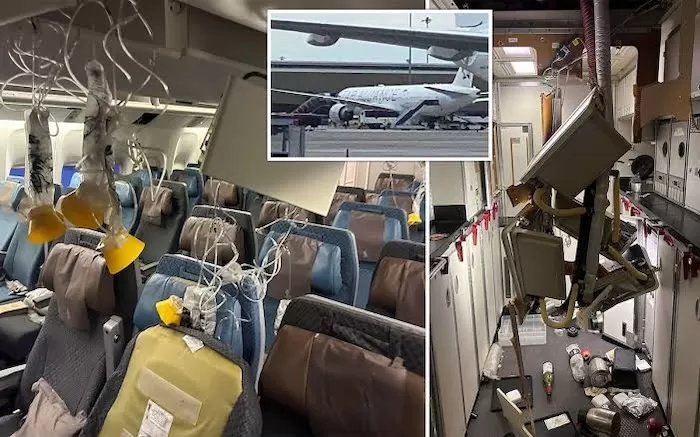Air Chief Marshall (Ret) Chappy Hakim- Chairman of The Center of Indonesia Air Power Studies.
On Monday, May 20, Boeing 777-300ER flight SQ 321, traveling from London to Singapore, experienced severe turbulence. The turbulence was so extreme that it resulted in one fatality and dozens of injuries, both serious and minor. This shocking incident is considered one of the worst turbulence-related airplane accidents in recent aviation history. The plane plummeted from an altitude of 37,000 feet to 31,000 feet in a very short time, prompting the question: how did this happen?
Various credible reports and sources provide some crucial insights. First, radar images showed that the plane was very close to the ITCZ (Inter Tropical Convergence Zone) line. The ITCZ is a moving line around the equator where North-South wind currents meet according to the season, and it is known to be a dangerous turbulence area. Additionally, weather reports indicated severe thunderstorms in the area. One passenger described the outside view as “completely white,” indicating the presence of CB (Cumulonimbus) clouds, which are known for severe turbulence. From these observations, it can be tentatively concluded that the aircraft inadvertently entered a severe weather zone.
The next critical question is why the plane entered this bad weather zone without warning passengers to return to their seats and fasten their seat belts, which is a standard procedure in flight operations. One possibility is that the pilot was unaware because the plane encountered CAT (Clear Air Turbulence). CAT refers to turbulence in clear skies that is invisible to the naked eye and undetectable by Weather Radar. However, this is highly unlikely because high turbulence CAT rarely occurs around the ITCZ and is more common in regions with four seasons. Moreover, dangerous CAT is typically listed in the weather forecast, which pilots check when planning their flight to avoid such areas.
Given that bad weather during a flight can be detected by the cockpit’s weather radar, why did the plane enter a heavy turbulence area without prior notification to passengers and crew? Before entering an area expected to cause turbulence, pilots usually inform passengers and cabin crew to return to their seats and fasten their seat belts. Why was this standard procedure not followed in this instance?
This is a question that only the investigation team can answer. We must await the results of a thorough investigation conducted by the Singapore Transport Safety Investigation Bureau (TSIB) in cooperation with the Aircraft Accident Investigation Committee (AAIC) of Thailand and the aircraft manufacturer Boeing. The goal of this detailed investigation is to ensure that such incidents do not recur. It aims to be as objective as possible, focusing on preventing future accidents rather than assigning blame.
Despite this incident, it is important to note that aviation technology, especially regarding aircraft safety, is highly advanced. Those who suffered injuries in this accident were primarily those not wearing seat belts. As a safety tip for airplane passengers: always sit and fasten your seat belts throughout the flight. Hopefully, such airplane accidents will not happen again in the future.
Jakarta, May 23, 2024


